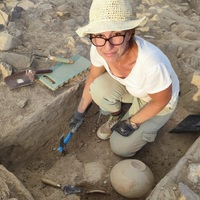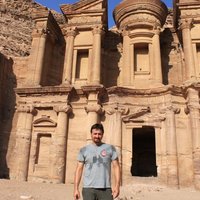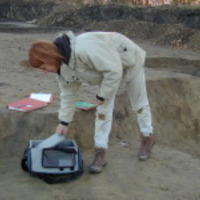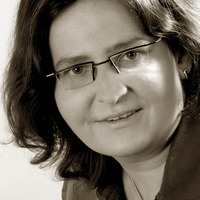La frammentazione del metallo nei ripostigli del Bronzo tardo. Un caso studio dai Balcani occidentali
Studi in onore di Andrea Cardarelli, L. Cicala, M. Pacciarelli (eds.). Archeologie. Temi, contesti, materiali 6, Naus editoria, Napoli 2024, 2024
The phenomenon of metal fragmentation is typical of European hoards of the Middle and Late Bronze... more The phenomenon of metal fragmentation is typical of European hoards of the Middle and Late Bronze Ages (1650/1550- 900/800 BCE). Quantitative and metrological analyses of bronze fragments from Italian and Central European hoards have demonstrated that the weight of bronze fragments is intentionally regulated. Statistical analyses show the existence of a consistent system of multiples aligned with contemporary weight systems, suggesting the use of fragments as weighted money. In this article, we analyzed a sample of 31 hoards and approximately 1400 Late Bronze Age objects (1350/1300- 900/800 BCE) from a previously unexplored area: Western Balkans (Bosnia and Herzegovina). Quantitative analyses reveal that fragmentation is a systematic phenomenon throughout the Late Bronze Age, with percentages comparable to other European regions, while metrological analyses confirm the consistency of fragments with the same system of multiples identified in Italy and Central Europe.











Uploads
Papers by Alberta Arena
Keywords · Prehistory, Pottery, Dalmatia, Underwater Archaeology, Seafaring.
Thanks to the huge amount of data available at present from both the western and eastern coasts, it is possible to point out that, in the post-Cetina horizon, trans-Adriatic interactions increased noticeably from the 17th to the 14th century BC, in conjunction with the emergence of hillforts and fortified settlements in the Adriatic area. We will briefly analyse all data at our disposal for the reconstruction and interpretation of these four centuries in which trans-Adriatic journeys, transmission of models, trade, exchange, exogamic practices etc. contributed in shaping the worldview of the communities living along its coasts.
Dalmatia.
Keywords: late Early Bronze Age; Middle Bronze Age; central Dalmatian coast; Adriatic networks; Dinara/Posušje Culture
has been traditionally analysed from the point of view of material
evidence, especially in funerary contexts, where disparities in tomb
architecture or in the articulation of grave goods may indicate the
presence of groups characterised by different access to resources
and social status. Recently, advances in the field of bioarchaeology
(osteology, isotopes, aDNA) have provided new insights into the
theme of inequalities and their relationship with kinship, diet, and
mobility. In our paper, we integrate the archaeological evidence
of social stratification with bioarchaeological data from four
Bronze Age key-sites in Italy, namely Olmo di Nogara, Casinalbo
(Po Plain), Trinitapoli-Ipogeo dei Bronzi, and Toppo Daguzzo
(south-eastern Italy). The aim is to analyse the variability of health
conditions, diet, mobility, and demographic parameters within
each of these cemeteries and compare the different dynamics of
the emergence of the elite group during the central centuries of the
second millennium BC.
Our overview shows that Bronze Age societies in general converged
towards a general model in which stratification and competition
were common structural traits across the whole peninsula. The
amplitude of inequalities, however, varies from site to site, as
well as from region to region, as a consequence of different socioeconomic
backgrounds and cultural manifestations of social
hierarchies. In conclusion, we underline the role of kinship as a
factor in securing internal stability for the emerging élite and the
importance of establishing interorganisational alliances and a
common ethos with other nodes of the network.
Croce Guardia (Arcevia – AN): Seasons 2015-2016 – The Monte Croce Guardia settlement (Arcevia, AN) is one of the most remarkable Late Bronze Age Italian sites. Being located on the top of a mountain (666 m ASL) it is naturally defended and overlooks a wide portion of the surrounding territory, from the Adriatic coast
to the Apennine ridge. The orographic unit of the site is composed by two hills linked by a col, Monte Guardia, the highest, and Monte della Croce.
The presence of archaeological remains is known since the end of XIX century, but only during the subsequent century systematic researches were conducted. Several excavation campaigns have been carried out by the Soprintendenza Archeologica delle Marche, from 1961 to 1995, under the direction of Delia Lollini and Mara Silvestrini. The results of these researches showed that Monte Croce Guardia site was intensively settled during the Late Bronze Age, and its extension reached at least 20 hectars. The archaeological investigations started again in 2015, after a long period of interruption, under the direction of Andrea Cardarelli (Sapienza – University of Rome), in collaboration with Marco Bettelli and Andrea Di Renzoni (CNR-ISMA). The first results of the new cycle of archaeological investigations, together with the thorough reviews of the previous ones, allow to better understand the complex architecture of inhabitations and other structures, together with the reconstruction of large portions of the settlement organization. In trenches 1 and 2 several rectangular huts with a gable roof have been found, and a large circular pit; the archaeological materials suggest a date in earliest phases of the Final Bronze Age, even if few pots can be dated in late phases of the same period. In trench 4 a sequence of three different huts were excavated: the earliest ones are similar in shape and dimensions to the structures present in trenches 1-2. The last hut is smaller and has a different architecture and orientation. In the archaeological layers belonging to this last structure a number of bronzes both undamaged and fragmentary have been
found, together with one or two stone moulds. These elements suggest the performance of smelting activities.
The presence of several small spools and loom weights, suggest also weaving activities. From a chronological point of view we have very few elements for a date of the lower hut; the second phase hut can be easily dated to early periods of Final Bronze Age; the third and last phase, represented by the smaller structure, on the basis
of bronzes and specific types of pottery can be dated to a final stage of Final Bronze Age.
Talks by Alberta Arena
After a long period of decline that characterized most of the 20th century, the archaeological research has taken new impulse and has constantly grown during the last three decades, largely confirming the intuitions of the 19th century scholars.
The Terramare are situated in the central Po River valley and date between the mid-17th and the first half of the 12th century BC (Middle Bronze Age and Recent Bronze Age). These villages were equipped with artificial fortifications and could reach 20 hectares in size.
With the beginning of the historical cycle of the Terramare culture, this territory appears densely populated reaching, and perhaps exceeding, 200,000 inhabitants, during the apogee.
During these five centuries, the landscape drastically changed and became intensively anthropized, with hundreds of villages, cultivated and irrigated fields, roads and other kind of infrastructures.
The intense demographic growth recorded for the early phases of the Terramare cycle does not seem to be explained only by an internal increase, but rather as the result of diverse forms of human mobility.
After a long period of great economic and social success, the Terramare culture entered a deep crisis that led to its collapse, a very complex phenomenon still not fully understood. Certainly, among the motivations that contributed to the disappearance of the Terramare, there were critical environmental and ecological conditions, but also the rigidity of the economic and socio-political model.
Plausibly, the disappearance of the Terramare is correlated with the deep socio-economic transformations that occurred in continental Italy in the last centuries of the second millennium BC. The archaeological evidence suggests that more or less large groups of refugees from the collapsing Terramare moved also southwards throughout the Italian peninsula.
The paper will focus on the possible role of the mobility in the rise and collapse of the Terramare, in the wider context of the Bronze Age Europe and Mediterranean.
Keywords · Prehistory, Pottery, Dalmatia, Underwater Archaeology, Seafaring.
Thanks to the huge amount of data available at present from both the western and eastern coasts, it is possible to point out that, in the post-Cetina horizon, trans-Adriatic interactions increased noticeably from the 17th to the 14th century BC, in conjunction with the emergence of hillforts and fortified settlements in the Adriatic area. We will briefly analyse all data at our disposal for the reconstruction and interpretation of these four centuries in which trans-Adriatic journeys, transmission of models, trade, exchange, exogamic practices etc. contributed in shaping the worldview of the communities living along its coasts.
Dalmatia.
Keywords: late Early Bronze Age; Middle Bronze Age; central Dalmatian coast; Adriatic networks; Dinara/Posušje Culture
has been traditionally analysed from the point of view of material
evidence, especially in funerary contexts, where disparities in tomb
architecture or in the articulation of grave goods may indicate the
presence of groups characterised by different access to resources
and social status. Recently, advances in the field of bioarchaeology
(osteology, isotopes, aDNA) have provided new insights into the
theme of inequalities and their relationship with kinship, diet, and
mobility. In our paper, we integrate the archaeological evidence
of social stratification with bioarchaeological data from four
Bronze Age key-sites in Italy, namely Olmo di Nogara, Casinalbo
(Po Plain), Trinitapoli-Ipogeo dei Bronzi, and Toppo Daguzzo
(south-eastern Italy). The aim is to analyse the variability of health
conditions, diet, mobility, and demographic parameters within
each of these cemeteries and compare the different dynamics of
the emergence of the elite group during the central centuries of the
second millennium BC.
Our overview shows that Bronze Age societies in general converged
towards a general model in which stratification and competition
were common structural traits across the whole peninsula. The
amplitude of inequalities, however, varies from site to site, as
well as from region to region, as a consequence of different socioeconomic
backgrounds and cultural manifestations of social
hierarchies. In conclusion, we underline the role of kinship as a
factor in securing internal stability for the emerging élite and the
importance of establishing interorganisational alliances and a
common ethos with other nodes of the network.
Croce Guardia (Arcevia – AN): Seasons 2015-2016 – The Monte Croce Guardia settlement (Arcevia, AN) is one of the most remarkable Late Bronze Age Italian sites. Being located on the top of a mountain (666 m ASL) it is naturally defended and overlooks a wide portion of the surrounding territory, from the Adriatic coast
to the Apennine ridge. The orographic unit of the site is composed by two hills linked by a col, Monte Guardia, the highest, and Monte della Croce.
The presence of archaeological remains is known since the end of XIX century, but only during the subsequent century systematic researches were conducted. Several excavation campaigns have been carried out by the Soprintendenza Archeologica delle Marche, from 1961 to 1995, under the direction of Delia Lollini and Mara Silvestrini. The results of these researches showed that Monte Croce Guardia site was intensively settled during the Late Bronze Age, and its extension reached at least 20 hectars. The archaeological investigations started again in 2015, after a long period of interruption, under the direction of Andrea Cardarelli (Sapienza – University of Rome), in collaboration with Marco Bettelli and Andrea Di Renzoni (CNR-ISMA). The first results of the new cycle of archaeological investigations, together with the thorough reviews of the previous ones, allow to better understand the complex architecture of inhabitations and other structures, together with the reconstruction of large portions of the settlement organization. In trenches 1 and 2 several rectangular huts with a gable roof have been found, and a large circular pit; the archaeological materials suggest a date in earliest phases of the Final Bronze Age, even if few pots can be dated in late phases of the same period. In trench 4 a sequence of three different huts were excavated: the earliest ones are similar in shape and dimensions to the structures present in trenches 1-2. The last hut is smaller and has a different architecture and orientation. In the archaeological layers belonging to this last structure a number of bronzes both undamaged and fragmentary have been
found, together with one or two stone moulds. These elements suggest the performance of smelting activities.
The presence of several small spools and loom weights, suggest also weaving activities. From a chronological point of view we have very few elements for a date of the lower hut; the second phase hut can be easily dated to early periods of Final Bronze Age; the third and last phase, represented by the smaller structure, on the basis
of bronzes and specific types of pottery can be dated to a final stage of Final Bronze Age.
After a long period of decline that characterized most of the 20th century, the archaeological research has taken new impulse and has constantly grown during the last three decades, largely confirming the intuitions of the 19th century scholars.
The Terramare are situated in the central Po River valley and date between the mid-17th and the first half of the 12th century BC (Middle Bronze Age and Recent Bronze Age). These villages were equipped with artificial fortifications and could reach 20 hectares in size.
With the beginning of the historical cycle of the Terramare culture, this territory appears densely populated reaching, and perhaps exceeding, 200,000 inhabitants, during the apogee.
During these five centuries, the landscape drastically changed and became intensively anthropized, with hundreds of villages, cultivated and irrigated fields, roads and other kind of infrastructures.
The intense demographic growth recorded for the early phases of the Terramare cycle does not seem to be explained only by an internal increase, but rather as the result of diverse forms of human mobility.
After a long period of great economic and social success, the Terramare culture entered a deep crisis that led to its collapse, a very complex phenomenon still not fully understood. Certainly, among the motivations that contributed to the disappearance of the Terramare, there were critical environmental and ecological conditions, but also the rigidity of the economic and socio-political model.
Plausibly, the disappearance of the Terramare is correlated with the deep socio-economic transformations that occurred in continental Italy in the last centuries of the second millennium BC. The archaeological evidence suggests that more or less large groups of refugees from the collapsing Terramare moved also southwards throughout the Italian peninsula.
The paper will focus on the possible role of the mobility in the rise and collapse of the Terramare, in the wider context of the Bronze Age Europe and Mediterranean.